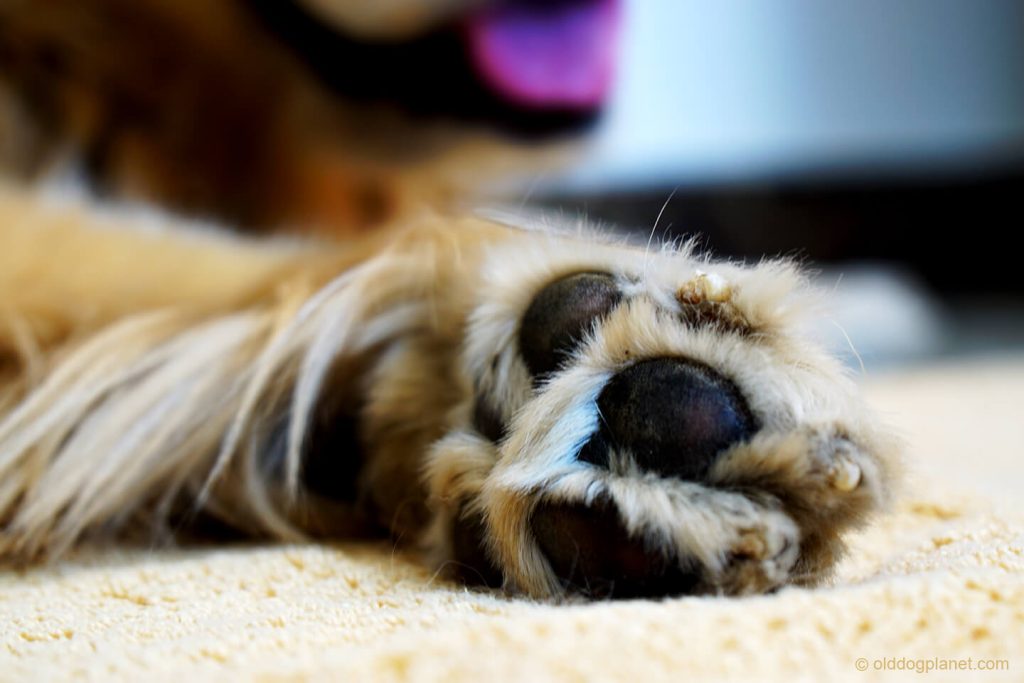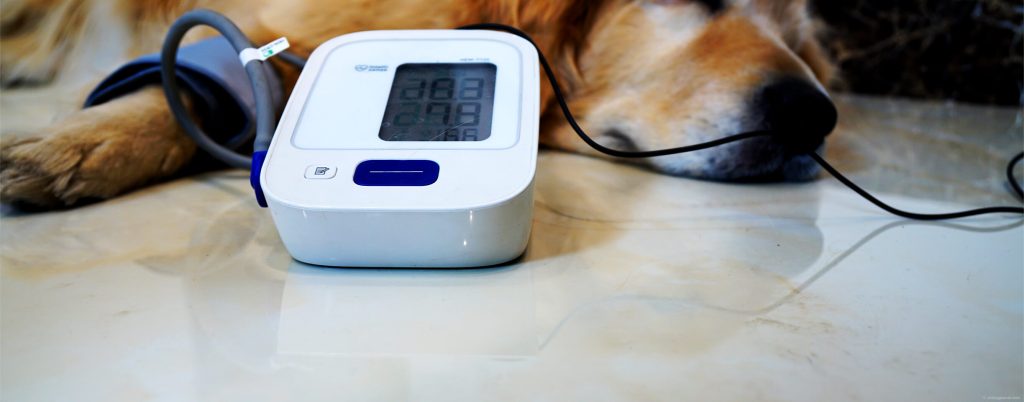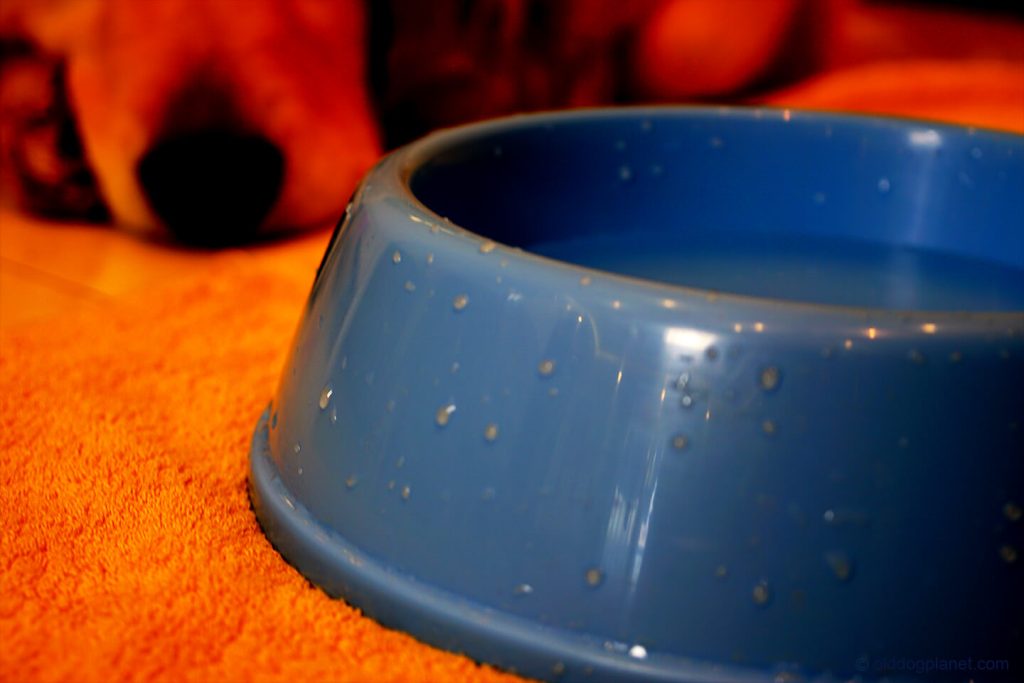Paw knuckling in older dogs is common, especially those with chronic joint disease. Let’s take a look at the most common symptoms and causes of knuckling.
Typical symptoms of knuckling
Here are typical symptoms of knuckling:
- Walking on top of foot/paw.
- Toes dragging on the ground during walking or significant swaying or swaying when the leg is in the air.
- The sound of nails scratching the ground can be heard when a dog walks on a hard surface.
- The hair on the paws are worn and even the skin on the paws are damaged due to friction sores.
Main causes of knuckling
Knuckling is usually caused by two reasons:
- Inability of the legs to get off the ground high enough, which is caused by shoulder, hip or knee disease. (Please refer to this blog post to learn more about joint disease)
- Loss and confusion in paw position perception due to neuropathy.
In terms of symptoms, knuckling caused by simple joint problems is very similar to knuckling caused by neuropathy, but there are important differences.
Differences between two types of knuckling
Let’s use an analogy to explain the distinction between them. Consider the brain and paws of a dog to be a manager and an employee, respectively, and the nerves to be the telephone lines through which they communicate. Manager Brain now calls staff Paw to schedule work.
When joint disease causes knuckling, only the joint function is affected, not the nerves, which means the phone can get through. Manager Brain then clearly communicates to the staff Paw the task of “lifting the leg 3 inches off the ground and forward 5 inches, and then landing on the sole of the paw.” The complete signal was also received by staff Paw. However, because the staff Paw could not be raised from the ground due to joint disease, it was forced to drag on the ground, which resulted in knuckling.
When neuropathy causes knuckling, it’s as if the phone doesn’t get through at all, or if the phone calls are intermittent, causing staff Paw to miss manager Brain’s instructions. And manager Brain has no idea where Paw is because he is unable to receive or understand feedback from staff Paw.
It can be seen that the fundamental difference between the two is whether the related nervous system is damaged. In this regard, the following methods can be used to distinguish the type of knuckling:
Diagnosis of causes of knuckling
- Let the dog stand on all fours, if the dog is not weight bearing you need to support the dog by putting a hand under the belly.
- Take the paw and flip it over into a knuckled position, observe the movement of the dog’s paws.
- If the dog has neurologic issues, the paw will replace into normal position very slowly or delayed or even not replace at all.
- Otherwise the dog should immediately replace the paw into a normal position.
- Use this method to check each claw in turn and repeat at least 3 times.
If the nervous system can normally transmit information back and forth between the brain and the paw, when the paw is placed in the position of the knuckling, the paw can send a signal to the brain informing the knuckling of its state. After receiving the signal, the brain determines that this is an incorrect posture and sends a command to the paw to change to standing on the soles of the paw.
I believe you can now roughly determine whether knuckling is caused by neuropathy using this simple and effective diagnosis. No matter what type the knuckling is, I recommend that you see your vet as soon as possible for a thorough diagnosis and to begin treatment and rehabilitation training. If your dog does not receive timely treatment and rehabilitation training for knuckling caused by neuropathy, the information transmission pathway of the nervous system will be completely blocked, causing your dog to miss the best treatment window.
While receiving professional veterinary care, we can use some common household items to create a good rehabilitation environment and provide some useful rehabilitation training for dogs. What we need to clarify here is that once knuckling of elderly dogs appears, whether caused by joint or neuropathy, it is nearly impossible to completely return to normal walking posture. We should not be depressed or give up as a result of this. Instead, we should do our best to protect the paws from abrasion when knuckling, and use this as a foundation for beneficial rehabilitation training for joint or nervous system diseases.
Rehabilitation training for knuckling
Here are some tips for paws protection and rehabilitation training:
- Place soft, non-slip rugs for your dog’s play area.
- Don’t walk them on surfaces like asphalt, cement, rocks, dusty dirt, rubber floor, which can easily scratch the top of the dog’s paws.
- Protect the top of the paws.
- If the top of the paw is abraded, keep your dog from licking the wound and bandage it with medicine until it heals completely.
- If the top of the paw is not abraded, wrap a bandage around the top of the paw to protect it. Avoid wrapping the bottom of the paws because the exposed bottom of the paws helps the dog sense the position and state of the paw, which is critical for rehabilitation training.
- For an elderly dog who is unable to raise his legs at all, you can purchase rehabilitation aids, which typically include a rope or elastic connected between the calves and toes to keep the toes forcing the top of the foot not to land when the paws strike the ground.
It should be noted that this type of rehabilitation training equipment has a strong pull on the toes and should not be worn for an extended period of time as it may cause discomfort and reduce the dog’s quality of life. It is recommended that dogs wear this device for no more than ten minutes at a time.
- Shoes, especially those with thick soles, should not be worn by dogs. The thickness of the soles compresses the upward movement space of the legs, making it more difficult for the dog to lift the legs, exacerbating the knuckling.
- Rehabilitation training of “tickles”. When you tickle the dog, especially around the back and buttocks, the dog will have some involuntary nerve reflexes that cause the body to contract or the legs to raise involuntarily. We can use natural nerve stimulation to get the dog to move its paws and try to stand in the proper posture. Here are the specific training steps:
- Allow the dog to stand on all fours and hold the dog’s belly with your hands or the help of towels, dog wheelchairs, and other instruments to relieve pressure on the dog’s limbs and make it easier for the dog to move its paws.
- Tickle the dog’s back and buttocks to find the tickling area that will allow him to nervous reflex behavior, and keep tickling to make her paws and nervous system busy in neural reflex behavior.
- Since tickling poses no risk to dogs, you can allow your dog to perform this rehabilitation training whenever you are available.
- Rehabilitation training of “Crossing the Mountains”. Build a varied terrain for your dog to find the correct footing position when crossing these low obstacles using LEGO bricks, used plastic water pipes, slender wooden bars, slender bottles, and other items. The following are the specific training methods:
- Choose items with the appropriate diameter based on the height that the dog’s paws can lift, which should not exceed 1 inch to avoid putting too much strain on the dog’s joints.
- Spread these thin objects on a flat, non-slippery ground to make a bumpy road or a small paradise with hills. Maintain an appropriate distance between the obstacles, which should be between 5 and 15 inches.
- Place some of your dog’s favorite treats between the slender objects so that they don’t hesitate to cross the mountains and explore them in order to find these treasures.
- For old dogs with joint disease, joint supplements rich in glucosamine, chondroitin sulfate, calcium fructoborate should be given, and fish oil rich in omega 3 can also be taken at the same time, which is also an effective supplement to relieve arthritis.





Hi,
Not sure if folks check this, but a follow up question, regarding the informal paw knuckling test….
My old golden shows intermittent knuckling. When I perform the test, one leg returns to normal immediately…the other takes 3 seconds.
Looking for clarity on what is considering “delayed”. I fully grasp this is all informal, but I’ve read about the above test, on numerous websites.
When we talk about a “delayed” response in the context of the informal paw knuckling test, it typically means that there’s a noticeable lag or slower reaction from the dog in correcting the position of its paw after it’s been knuckled over. Although there isn’t a specific timeframe universally agreed upon to define what constitutes a delayed response, it generally implies that the correction takes longer than expected.
In practical terms, a delay might be considered significant if the dog consistently takes several seconds (more than 2-3 seconds) to correct the position of its paw. However, it’s important to remember that this test is informal and subjective, and its interpretation should be done in conjunction with other clinical signs and a veterinary evaluation.
If you notice intermittent knuckling in your older golden retriever, it’s advisable to discuss your observations with your veterinarian. They can conduct a thorough examination and any necessary diagnostic tests to determine the underlying cause of the knuckling and recommend appropriate treatment options.